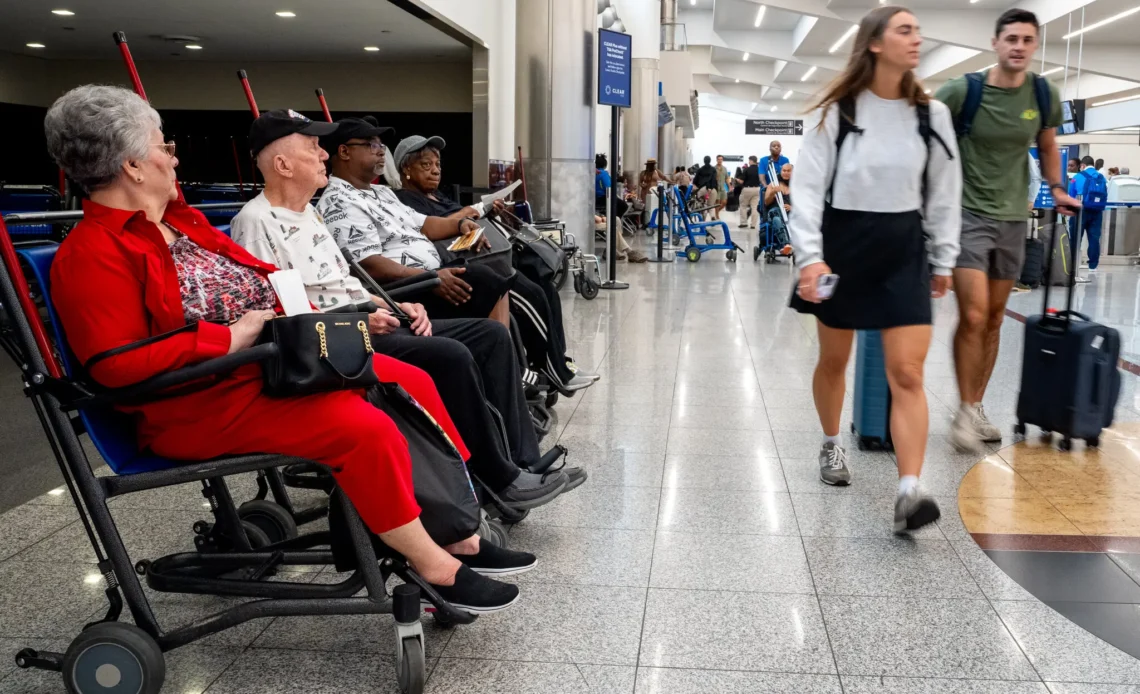For years, air travel has posed unique and often daunting challenges for people with disabilities. From damaged wheelchairs to inadequate boarding assistance, the journey through airports and onto planes has rarely been smooth. Now, travelers with wheelchairs are facing renewed setbacks as federal protections weaken and airlines shift away from their responsibility to uphold accessibility standards.
What was once a slow path toward inclusion and fairness has, in recent years, taken a troubling detour, leaving many travelers feeling abandoned by both the airline industry and government regulators.
Understanding the Rights of Travelers With Wheelchairs
Historically, the Air Carrier Access Act (ACAA) has served as the primary legal protection for travelers with disabilities in the U.S., including travelers with wheelchairs. Passed in 1986, the law prohibits discrimination by airlines and guarantees certain rights, such as:
- Pre-boarding at the passenger’s request
- Free assistance with boarding, deplaning, and navigating the terminal
- Transportation of mobility aids (like wheelchairs) at no additional cost
The Department of Transportation (DOT) has been the chief enforcement agency, responsible for investigating complaints and ensuring compliance. However, enforcement has traditionally relied heavily on passengers filing formal complaints—an extra burden for individuals already dealing with travel-related stress and disability.
Policy Changes and Loopholes
During the Trump administration, several regulatory shifts began to change the landscape of air travel for people with disabilities. Airlines successfully lobbied for fewer penalties for violations, and enforcement mechanisms were softened. Though the letter of the ACAA remains intact, the spirit of accountability has weakened.
Additionally, a push toward “voluntary compliance” gave airlines more leeway to interpret accessibility standards on their terms. As a result, travelers with wheelchairs report growing inconsistency in how policies are applied—from one airline to the next, and even between different flights on the same carrier.
The Real-World Impact on Travelers With Wheelchairs
Damaged and Lost Wheelchairs
One of the most devastating issues facing travelers with wheelchairs is the mishandling of mobility devices. A 2021 DOT report revealed that U.S. airlines mishandled an average of 29 wheelchairs per day. For many, a wheelchair is not just equipment—it’s freedom and independence. Damaging one is akin to breaking someone’s legs.
Travelers have reported arriving at their destinations only to find their wheelchairs severely damaged or entirely unusable. Some are left stranded, unable to leave the airport or attend events they flew to reach. Replacement or repair costs can run into the thousands, and not all airlines reimburse promptly, if at all.
Poor Assistance and Inadequate Staff Training
Despite mandates for assistance, many travelers with disabilities still find airport staff poorly trained or entirely unavailable. Incidents include passengers being dropped during transfers, left unattended in terminals, or rushed through without proper safety measures.
This lack of preparedness is not only unacceptable—it’s dangerous.
Emotional and Financial Toll
Beyond the physical risks and logistical setbacks, these failures take an emotional toll. Travelers with wheelchairs have described feelings of humiliation, helplessness, and fear. Some even choose not to fly at all, feeling that the experience is simply not worth the risk.
Stories From the Front Lines
“My wheelchair was damaged beyond use after a five-hour flight. The airline gave me a temporary chair, but it didn’t fit me. I couldn’t move properly, and I missed the event I flew to attend.” — Maria R., a traveler from Texas.
“It’s exhausting to fight for your rights every step of the way. We don’t want special treatment—we just want our dignity and independence respected.” — James L., disability advocate.
Organizations such as Paralyzed Veterans of America and the American Association of People with Disabilities (AAPD) have condemned these setbacks and are actively pushing for stricter oversight and stronger protections.
What Needs to Change?
Stronger Oversight and Transparent Reporting
Advocacy groups are calling on the DOT to reinstate penalties for violations and mandate transparent reporting of all incidents involving damaged or mishandled wheelchairs. Data collection is key to accountability.
Airline Investment in Training and Design
Airlines must invest in training their staff and upgrading their aircraft to better accommodate travelers with disabilities. This includes safer transfer procedures, more accessible cabins, and secure wheelchair storage options.
Know Your Rights: Tips for Travelers With Wheelchairs
- Pre-board: Always request pre-boarding and assistance ahead of time
- Tag and Document: Take photos of your wheelchair before check-in and ensure it is clearly labeled as fragile
- Carry Essentials: Bring any removable parts or accessories in carry-on luggage
- File Complaints Promptly: If issues arise, report them to the airline and the DOT immediately
Conclusion
Air travel should be a gateway to opportunity, not a barrier. Yet, for many travelers with wheelchairs, recent regulatory shifts have made the skies more turbulent than ever. From damaged wheelchairs to inconsistent assistance, the failure to uphold basic protections reflects a broader neglect of disability rights in the travel industry.
It’s time for airlines—and policymakers—to prioritize accessibility and dignity for all passengers. Because everyone deserves the freedom to travel safely, confidently, and without compromise.
Stay Informed with Trending Stories – Join Our Newsletter Today!


